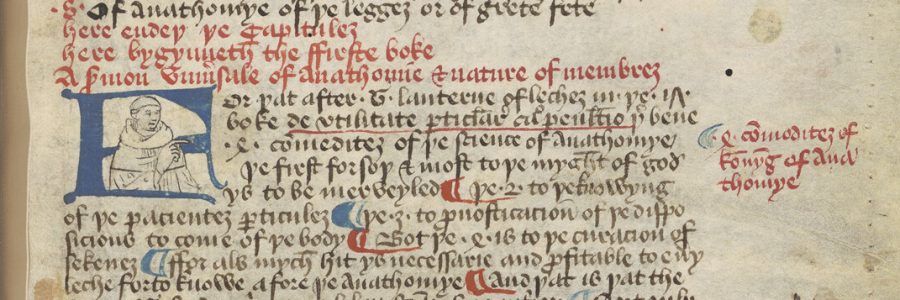
Curious Cures in Cambridge Libraries: Project Update
The Curious Cures in Cambridge Libraries project has been running since May 2022 and, as our two-year anniversary appears on the horizon, we thought followers of the Special Collections blog might be interested in a progress update. As you’ll recall, Curious Cures is following the procedure established by the Polonsky Greek Manuscripts project (2019-22) and other large-scale digitisation projects, in combining cover-to-cover photography with conservation and cataloguing, for 186 medieval manuscripts that contain unpublished medical recipes, across the collections of the University Library, Fitzwilliam Museum and twelve Cambridge colleges.
So how are things going? Here are some statistics…

Digitisation: a frankly staggering 39,967 images have been captured from 120 manuscripts, more than half of which (20,327) were generated by Raffaella Losito, our dedicated Project Photographer. Blazej Mikula, Mark Box and Scott Maloney from the UL’s Cultural Heritage Imaging Laboratory, as well as Mike Jones from the Fitzwilliam Museum, contributed the rest.
Conservation: Marina Pelissari and Rachel Sawicki, Project Conservators, have completed treatments on 115 manuscripts: 48 from the University Library’s collections and 67 from the libraries of Cambridge colleges. Working in collaboration with Shaun Thompson, Senior Project Conservator, they have also completed more painstaking treatments on several UL manuscripts, including fragile leaves of paper, a decaying medieval binding and a badly creased page of parchment. Two further manuscripts are still in intensive care, but will make their début on the Cambridge Digital Library in the near future.
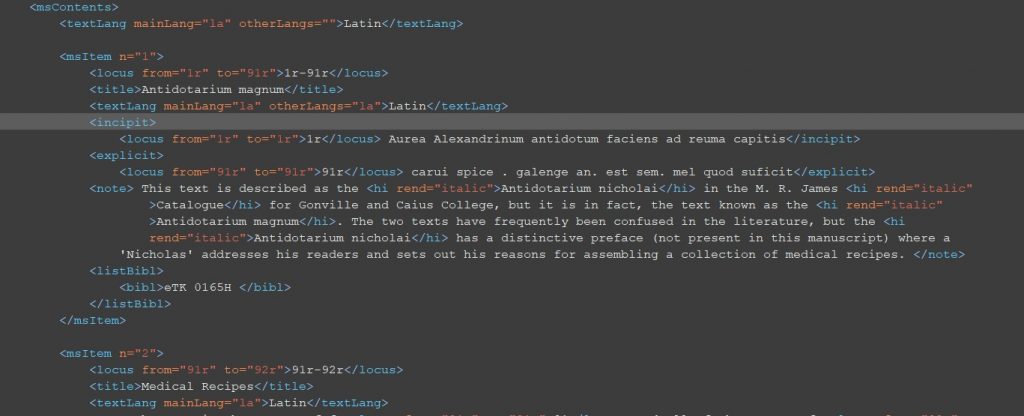
Cataloguing: Clarck Drieshen and Sarah Gilbert have composed 117 detailed descriptions of manuscripts’ textual contents, material characteristics, origins and provenance. Over 70 of these are accompanied by introductory summaries, many written by Clarck and Sarah themselves. Some have been specially commissioned from historians of medicine and health, showcasing the variety of research being done on Cambridge’s collections, as well as the many ways in which scholars will benefit from greater access to these manuscripts.
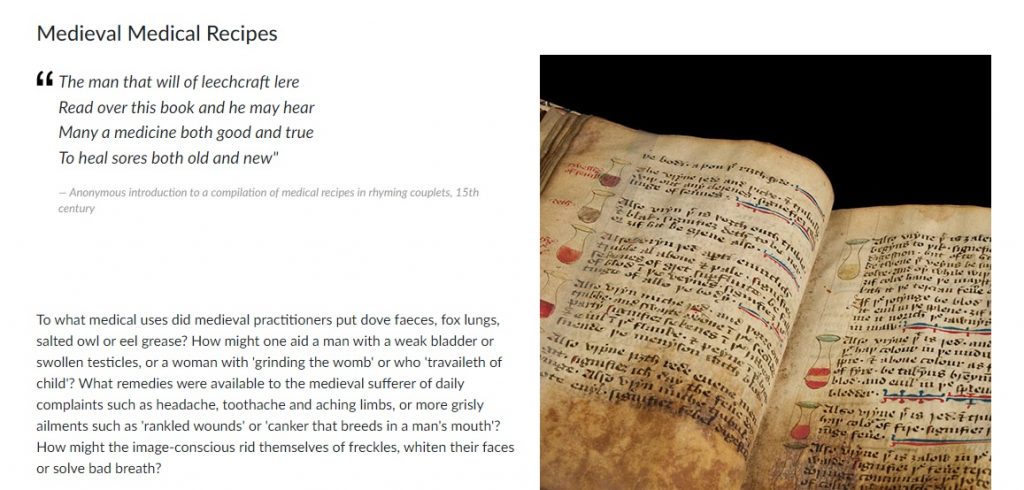
Cambridge Digital Library: with the help of Imogen Ford, Digital Library Co-ordinator, 108 manuscripts have now been published on a dedicated collection on CUDL, where they are available for all to see.
Over the course of the project, we’ve shared a number of stories about the manuscripts covered by Curious Cures, with a series of blog posts on creepy-crawlies and ghost stories, gynaecology, fine dining, Zodiac Man and talking books, flaking pigments and developments in digital photography. We thought this update might be an opportune moment, though, to bring other interesting manuscripts to your attention – and so members of the project team have nominated some of their favourites that are definitely worth a closer look…
Marina Pelissari, Project Conservator
One of my highlights from working on the Curious Cures in Cambridge Libraries Project was the conservation treatment of a legal manuscript written in Middle English on paper (Cambridge, University Library, MS Ee.5.22). Even though only two of its leaves contain medieval medical recipes, it still got cover-to-cover care from Conservation, and in particular special treatment for each of its 379 leaves. The book had extensive mould and water damage, which meant the paper leaves were all very soft and fragile, in exactly those places you touch to turn the pages: the top, bottom, and fore edges. At some point, it appears that a rodent found the paper extremely tasty and nibbled away one of the corners of the textblock!
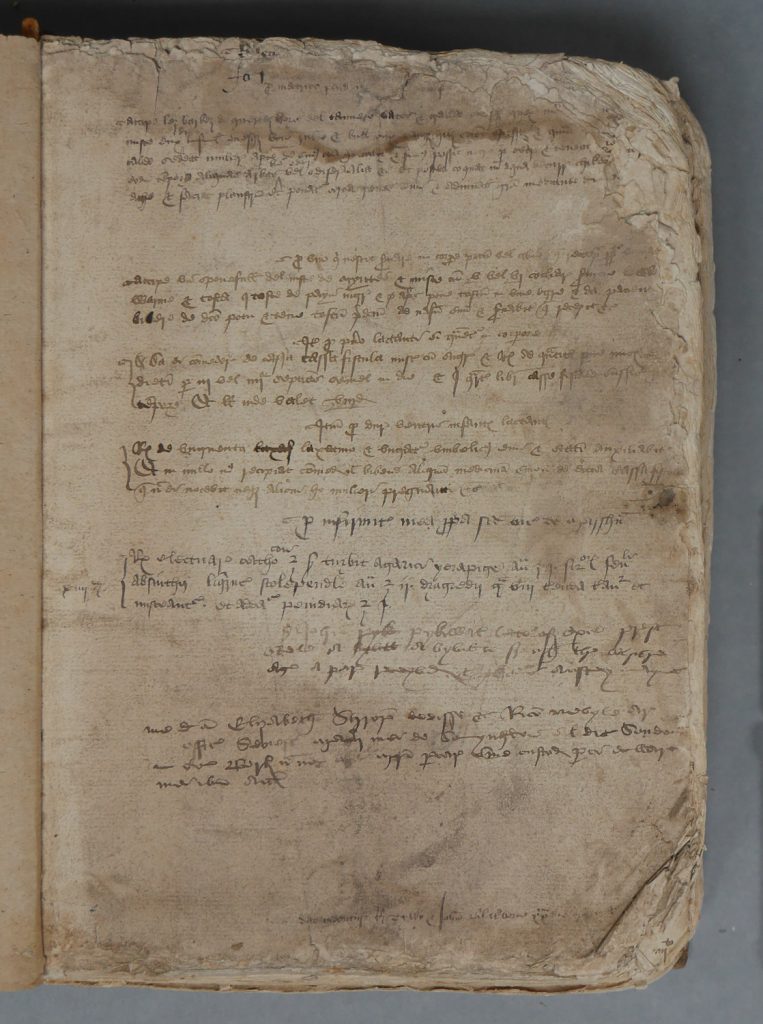
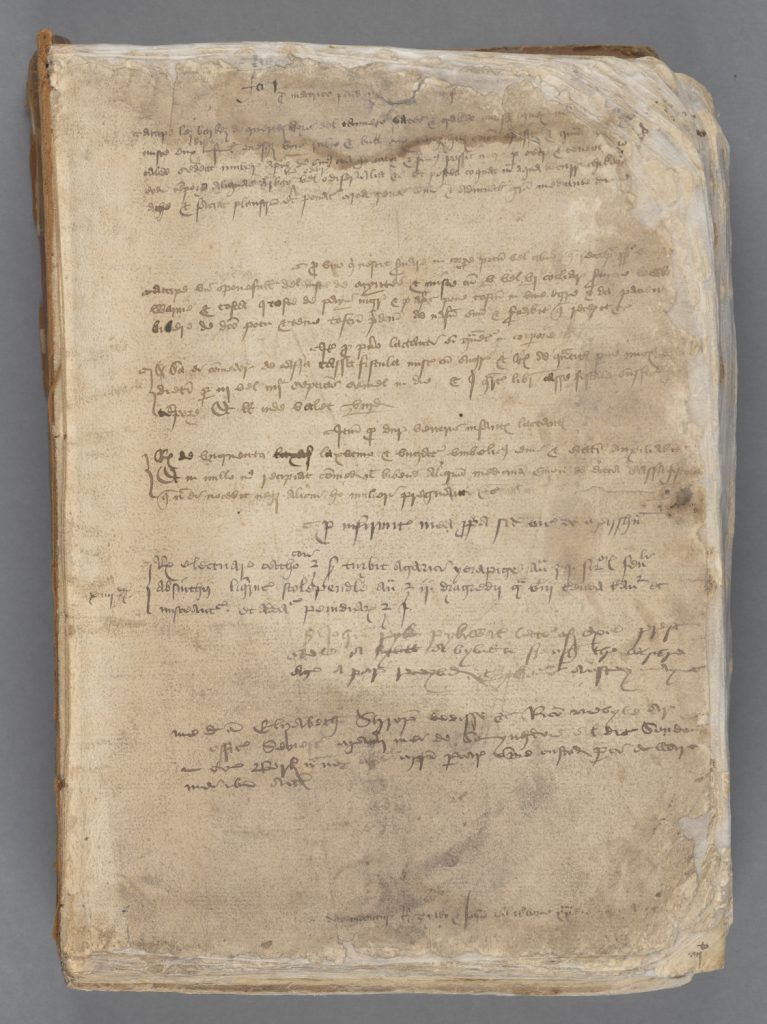
Paper repairs are one of my favourite conservation treatments – and after spending around 150 hours on this manuscript, I had had plenty of practice. It was a challenge to bring this very damaged book back from the brink, and to get it into a condition that would be safe for digitisation and for use by researchers, but looking at the ‘before’ and ‘after’ photos is very satisfying!
Sarah Gilbert, Project Cataloguer
One of the best surprises while cataloguing manuscripts for the Curious Cures project was when Gonville and Caius College, MS 379/599 arrived on my desk. When I turned it over to examine the beautiful binding in more detail, I saw my first ever medieval fenestra in person. A fenestra (Latin for ‘window’) is a medieval book label that was made from a strip of parchment with a title written in ink, protected by a layer of animal horn shaved thin enough to be transparent, and then held in place on a cover with small metal tacks hammered into the board. For this manuscript, the label reads ‘Cure magistri poncii’, referring to the Curae of Pontius de Sancto Aegido found inside.
Complete medieval fenestras are relatively rare, as they often had slightly rough or raised edges that would catch on things and tear away, leaving only the holes for the tacks behind as evidence of their former presence on a binding. Fixed to the back of the binding, the fenestra is an example of how medieval readers thought differently about storing and organising their books. In this example, it also suggests that for one reader at least, the Curae of Pontius de Sancto Aegido was the most important of the many textual contents in this book.
Rachel Sawicki, Project Conservator
One of my project highlights was Magdalene College Pepys 911, a compilation of prognostic texts, copied onto parchment in the 13th century. The volume features a brilliant array of full-page illuminations, detailed anatomical diagrams, marginal sketches, and a fully functional, but rather crumpled, volvelle stitched to the first page. The volvelle required conservation treatment to unfurl the folded edges, and the careful application of moisture and controlled flattening yielded gratifying results. I have a real love for illuminated manuscripts and the opportunity to examine the condition of the pigments under the microscope was a real delight. Parchment flattening and pigment consolidation can be a painstaking process: twenty hours of treatment were needed for this manuscript, but I enjoyed every minute spent with this glittering little treasure.
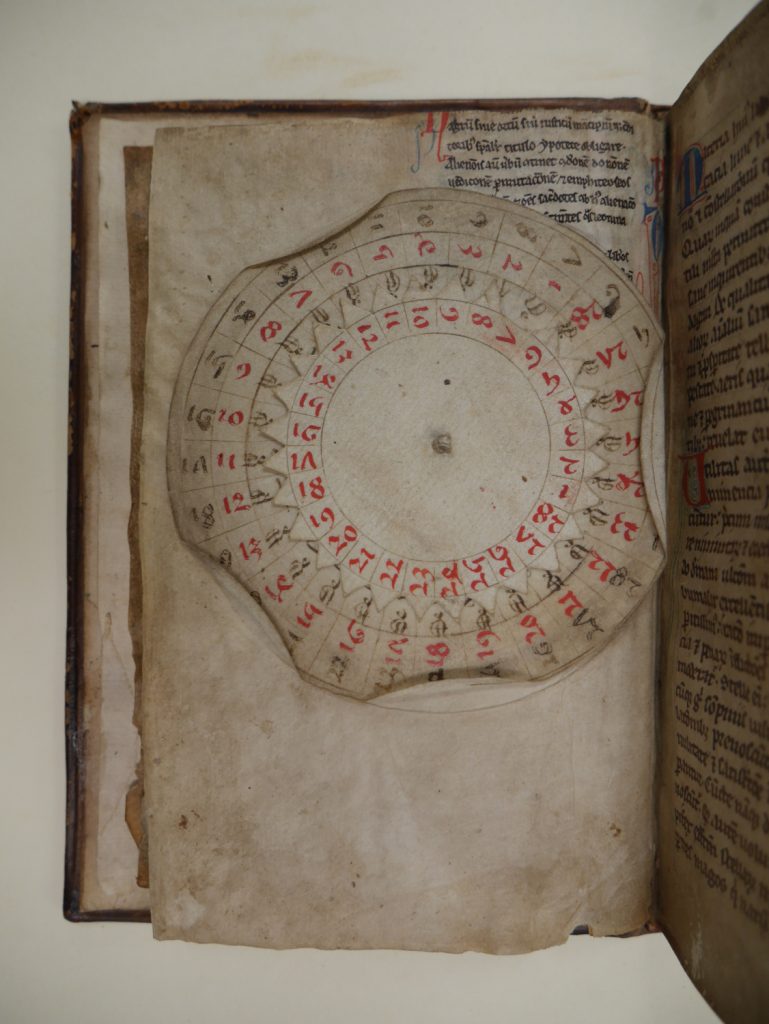
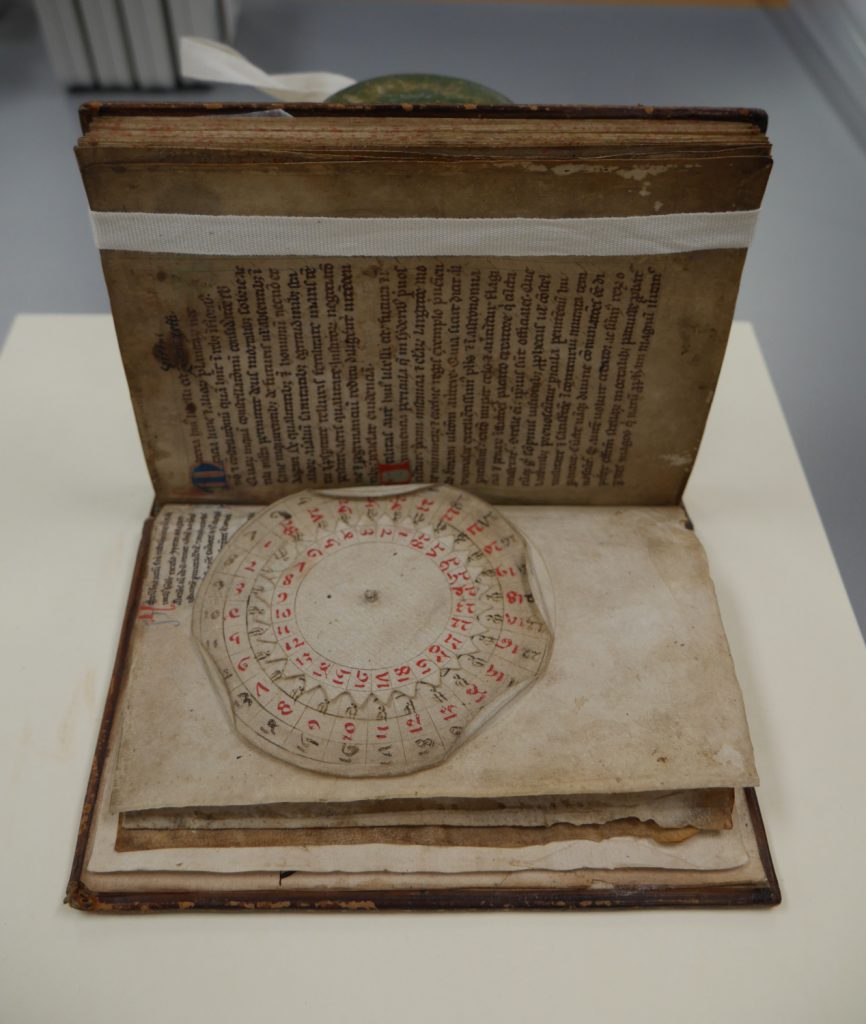
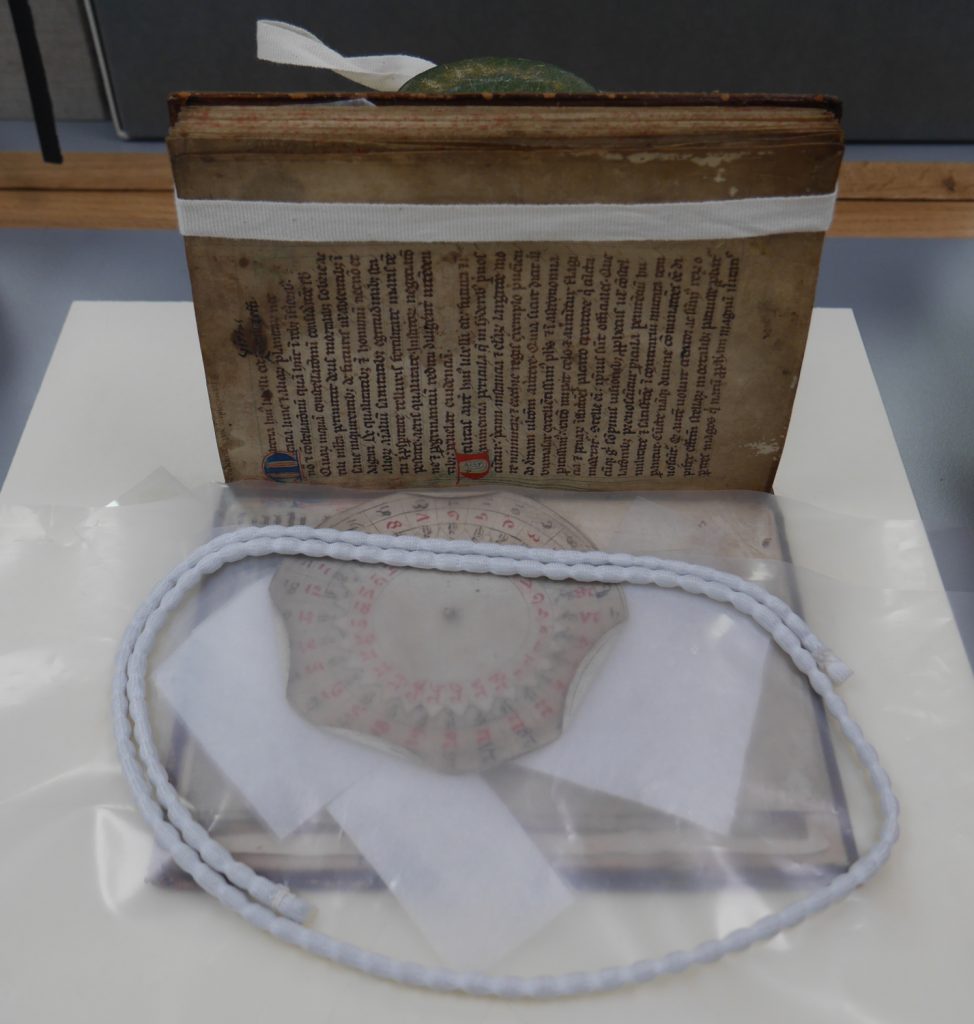
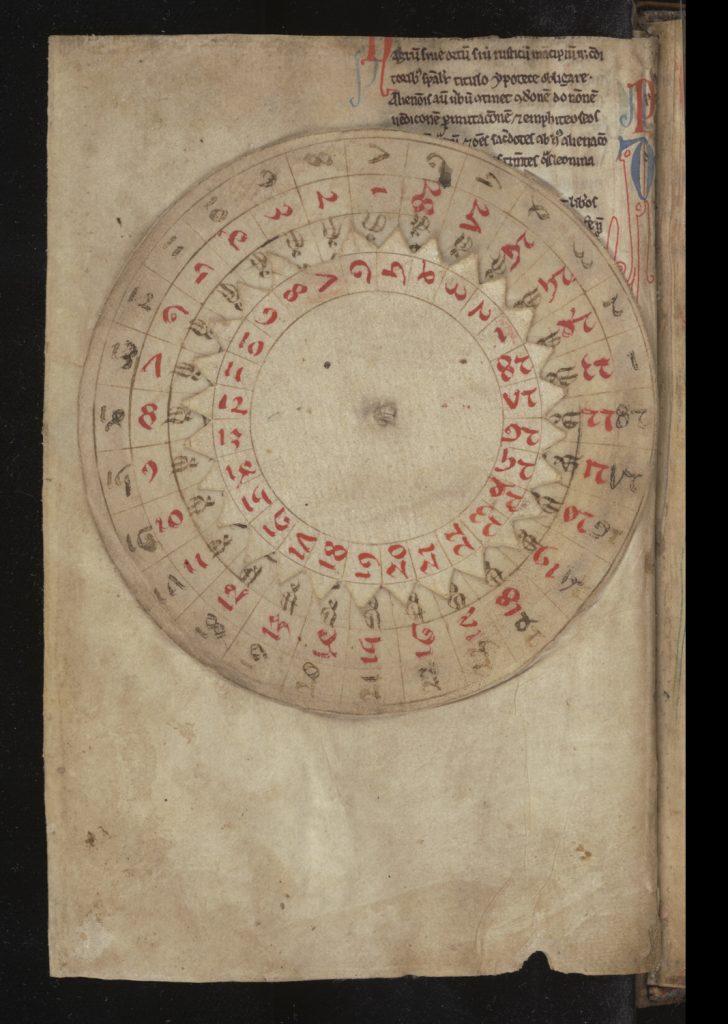
Clarck Drieshen, Project Cataloguer
Not all of the medical recipes in our project concern human medicine. One project manuscript contains a large collection of recipes for healing diseases and ailments in horses (Cambridge, University Library, MS Dd.4.44). It opens with a section from a 15th-century treatise on veterinary medicine and horse breeding known as The Boke of Marchalsi and is followed by many additional recipes. The latter are interspersed with magical healing spells, known as charms. Most of these are aimed at healing ailments such as fever, worms, and glanders (farcy), an often-fatal disease in horses.
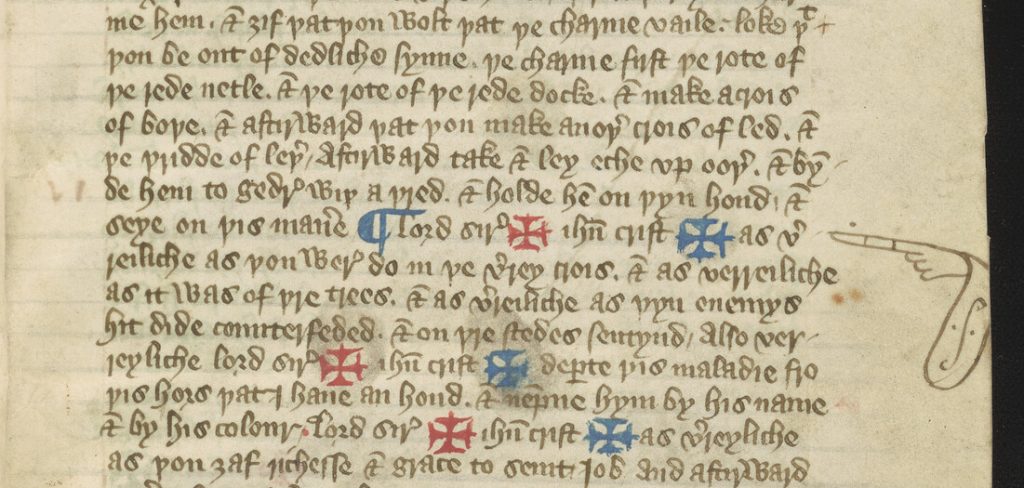
One charm against farcy involves a lengthy ritual in which the healer seeks to invoke the restorative and salvatory powers that were associated with the Crucifixion. The healer makes three crosses – one composed of the roots of dead nettle and red dock, the second of lead, and the third of leather – before combining them into a single cross. This is in imitation of the True Cross that, according to tradition, was made from three types of wood. After holding the cross in their hand and reciting a charm over it, the healer was then instructed to make an incision in the horse’s rump and place it under their skin so that the horse is joined to the cross just like Christ’s body was joined with the Cross.
Images of Cambridge, Magdalene College, MS Pepys 911 reproduced by kind permission of the Master and Fellows of Magdalene College, Cambridge.

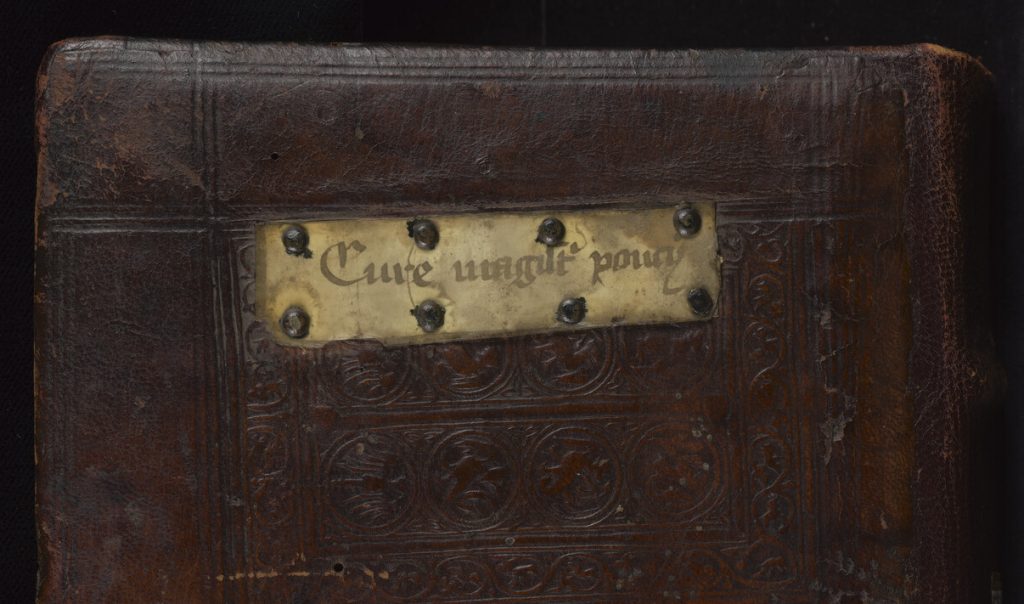
I found Curious Cures while searching for medieval medicinal recipes for a character in a novel I’m (re)writing. What a glorious project it is.
I’m wondering if the transcription stage has been reached for this manuscript:
https://cudl.lib.cam.ac.uk/view/MS-GONVILLE-AND-CAIUS-00366-00588/1
and if it has, where can I find it and search it for medieval medicinal recipes (in modern English, I assume? Or in readable Old English)? I’m looking for a text that – as this one does – originated in medieval Italy.
I look forward to hearing from you.
Dear Angela,
Thank you for your message – and sorry for the delay in replying; I only this morning noticed your message had been published on the blog.
Unfortunately, the project met with some technical difficulties in attempting to use Handwritten Text Recognition in order to speed up the process of transcribing the medical recipes. This has meant that we have not made as much progress in this respect as we had hoped. We also only planned to provide transcriptions, rather than translations.
The Antidotarium magnum did indeed originate in Italy. There is an indispensable guide to it by Monica Green, available here: https://www.academia.edu/40255503/The_Antidotarium_magnum_A_Short_Description_2019_. It mentions attempts to edit, transcribe and translate the text, with many useful links to resources that you will, I hope, find helpful.
Best wishes,
James Freeman
Principal Investigator, Curious Cures in Cambridge Libraries